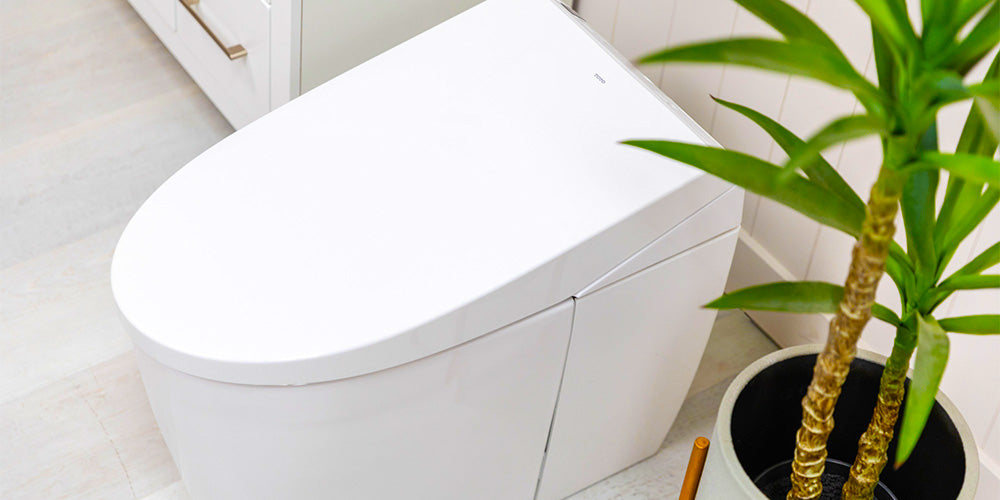In an era where personal hygiene is more important than ever, bidets are gaining popularity as a superior alternative to traditional toilet paper. Originating from France in the 18th century, these devices use a gentle stream of water to clean the user after using the toilet, offering not just comfort but also environmental benefits by reducing paper waste. However, one common concern among potential users is hygiene—how does a bidet itself stay clean? Modern bidets incorporate advanced features to ensure they remain sanitary, minimizing the risk of bacterial buildup or cross-contamination. In this article, we'll explore the top three ways bidets achieve this: through nozzle sterilization, the use of stainless steel nozzles, and by limiting the strength of the warm air dryer to curb germ spread within the toilet bowl.
Nozzle Sterilization
First and foremost, nozzle sterilization is a key mechanism that keeps bidets hygienic. The nozzle, which extends to deliver the water spray, is a potential hotspot for germs if not properly maintained. Electric bidet models employ built-in sterilization systems, often using water to clean the nozzle automatically. Some models, like the Bio Bidet Discovery DLS, utilize UV sterilization to sterilize the nozzle after each use. Once retracted the nozzle will be exposed to ultraviolet rays, which effectively kill up to 99.9% of bacteria and viruses without the need for harsh chemicals. Some bidets, like TOTO's Washlet line, utilize its exclusive EWATER+ sterilization system. This process happens seamlessly in the background, ensuring the nozzle and bowl is fresh for the next user. By preventing microbial growth, nozzle sterilization addresses hygiene concerns head-on, making bidets safer than shared toilet seats or even manual wiping methods that can leave residue.
Stainless Steel Nozzle
The second way bidets maintain cleanliness is through the material of their nozzles: stainless steel. Unlike plastic alternatives, which can harbor scratches and pores where bacteria thrive, stainless steel is inherently non-porous and resistant to corrosion. This material's smooth surface makes it difficult for contaminants to adhere, allowing for easy cleaning with just water or mild soap. Many bidet manufacturers opt for medical-grade stainless steel, similar to that used in surgical instruments, which adds an extra layer of durability and hygiene. Over time, stainless steel nozzles resist staining and odor absorption, ensuring long-term sanitary performance. Studies on household appliances show that stainless steel surfaces reduce bacterial survival rates compared to plastics, as they don't provide the same breeding grounds for microbes. In a bidet context, this means less frequent deep cleaning is required, and the risk of biofilm formation—a slimy layer of bacteria—is significantly lowered. Users can rest assured that the nozzle's material actively contributes to a germ-free experience, enhancing overall bathroom hygiene. Some bidet models that include a stainless steel nozzle are the Alpha JX2, Alpha UX Pearl, BidetKing Crown, Brondell Swash Thinline T44 and Bio Bidet BB-2000 Bliss.
Warm Air Dryer Strength
Finally, bidets promote hygiene by deliberately limiting the strength of their warm air dryers, a feature designed to prevent the dispersal of germs inside the toilet bowl. While air dryers provide a hands-free drying option, overly powerful blasts can aerosolize water droplets containing bacteria or fecal matter, spreading them around the bowl or even into the air. To counter this, manufacturers calibrate the dryer to a gentle, low-velocity airflow—typically around 5-10 meters per second—which evaporates moisture without creating turbulence. This controlled approach minimizes the "splashback" effect, keeping potential pathogens contained within the bowl rather than scattering them onto surfaces. Research from environmental health journals indicates that high-speed dryers in public restrooms can increase airborne bacteria by up to 27 times, but bidets' subdued settings avoid this pitfall. By prioritizing containment over speed, this feature not only dries effectively but also reduces cross-contamination risks, making the bidet a hygienic powerhouse.
In conclusion, bidets aren't just about luxury; they're engineered for superior cleanliness through innovative features like nozzle sterilization, stainless steel construction, and moderated air drying. These elements work together to create a self-sustaining hygienic system that outperforms traditional methods. If you're considering upgrading your bathroom routine, a bidet could be a game-changer—offering peace of mind alongside eco-friendly perks. With proper maintenance, such as occasional manual checks, your bidet will remain a reliable ally in daily hygiene for years to come.









